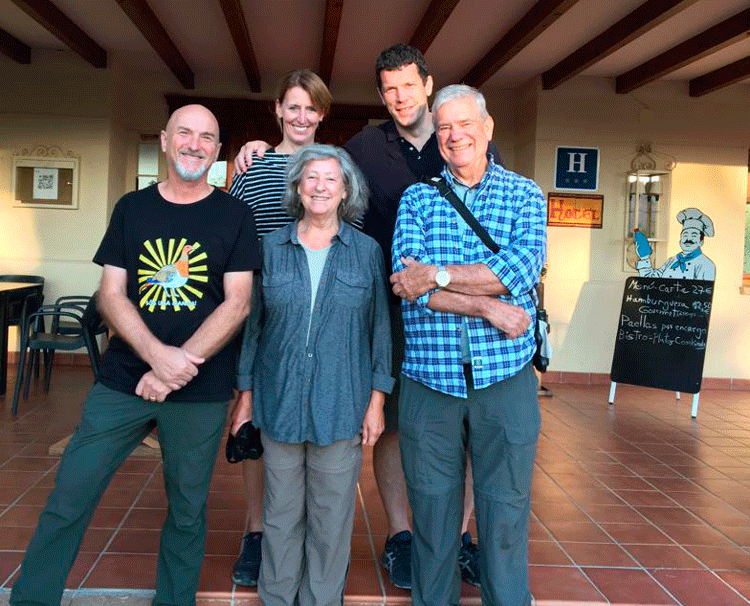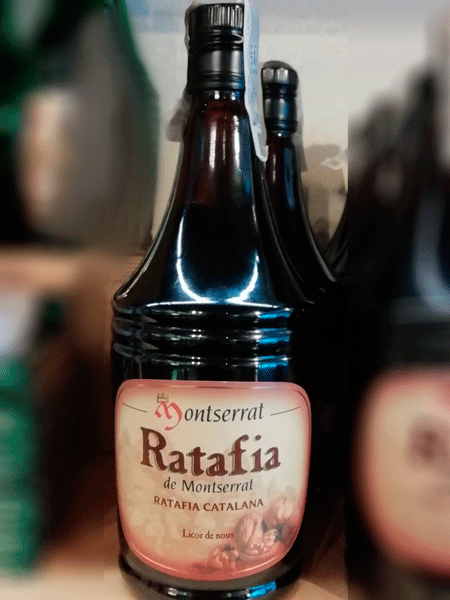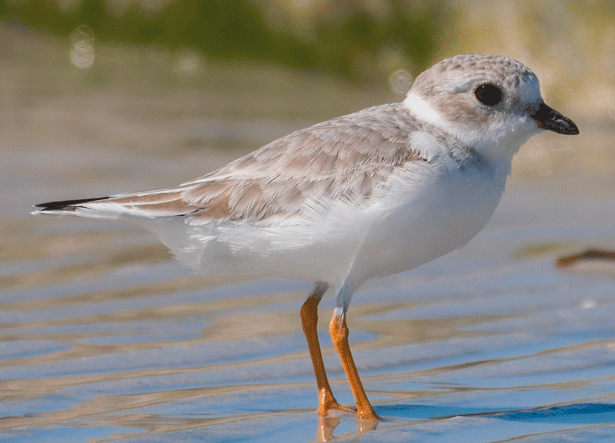A private autumn tour for Elissa
Elissa, husband Bill, their Godson Tim and his wife Imelda came to us for a short autumn birding break. We designed a tailor-made 4-day birding tour for them to fit into their holiday plans which included a stay in Catalonia, where they would visit Girona, the Costa Brava and Barcelona.

Autumn tour group in front of hotel in Sierra de Guara
We started at a Barcelona airport hotel, and in just over an hour we were birding to the east of Lleida. First off was a Stone-curlew flock of over 100 birds, near a busy roundabout, and then a small flock of Little Bustards, an Iberian Grey Shrike, Eurasian Hoopoe, Wryneck, Whinchat, Common Redstart, and a single Golden Plover.
A brief visit to the Estany d’Ivars allowed us to catch up with a number of ducks, grebes and other wetland birds before we finished the day’s birding with a high note at the border with Aragón: 2 Bonelli’s Eagles in flight with a Golden Eagle and a number of Griffon Vultures – the first of many.
We spent the second day exploring the tranquil Sierra de Guara. In addition to the magnificent scenery there were some great looks at stunning birds such as the Lammergeier. We also clocked up a couple of Lesser Spotted Woodpeckers, numerous Red Kites, a Golden Eagle, a Firecrest and the surpise of the day – a Wallcreeper!
For our third day we headed to the Pyrenees and actually set a foot in France. There wasn’t much there in the way of birds though, although we discerned both Alpine and Red-billed Choughs through the scope, more Lammergeiers, a single Honey Buzzard on migration and a pair of Golden Eagles, among others.
For our last day we headed back to Lleida for them to catch the fast train to Girona, to continue with their visit, although without the focus on birds. Just enough time to find a Black Wheatear, Alpine Swifts, Thekla’s Larks, Blue Rock Thrush and Rock Sparrow near the plains and then a surprise sighting of 2 Black Storks in a large migratory flock of White Storks. Then, at Lleida it was time to say our farewells.
Elissa later informed me that they had tried Ratafia on my recommendation while in Girona and were very happy that they did!

Ratafia – an excellent Catalan liqueur based on green walnuts

